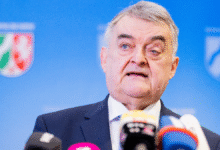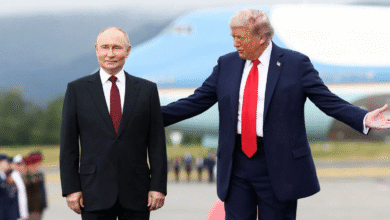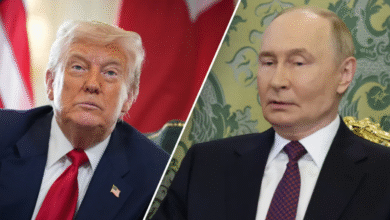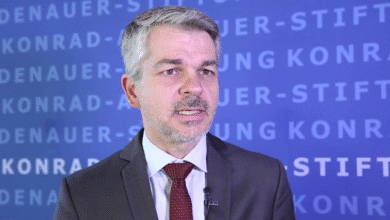Herbert Reul Auge: Bedeutung, Symbolik und öffentliche Wahrnehmung
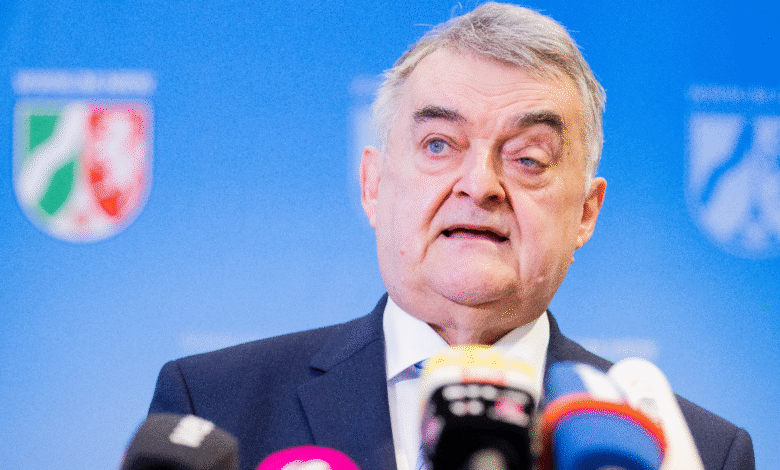
Herzlich willkommen — let us approach the phrase herbert reul auge with the calm attention of someone who reads slowly and thinks like a neighbor in a German town coffee shop. When that phrase appears in search bars or conversation, it can mean several things at once. It may be a literal curiosity about an eye, a metaphor about oversight, a journalistic hook, or an invitation to think about public visibility and responsibility in a democracy. In this article I will travel with you through those meanings in clear, approachable English, but with a German sensibility: precise, direct, and a little fond of understatement.
At the heart of this piece is a desire to be useful. I will not chase sensational claims or invent private details. Instead I will consider public roles, symbolic language, media practice, and democratic tradeoffs — all seen through the lens that the phrase herbert reul auge evokes. Expect thoughtful interpretation, practical reading tips, and accessible explanations. This is written casually but from an informed perspective, so you can read it with curiosity rather than alarm.
Who is he, and why does the eye matter to the public
In public life, a name like herbert reul auge can conjure a biography, policies, and public moments. To many Germans the family name is familiar from years of political work at regional and European levels. The eye in that phrase adds a new layer: it hints at scrutiny, vision, or perhaps a literal photograph captured by a camera. Understanding why people attach an eye to a political figure helps us figure out what they want to know or what story is being told by journalists and commentators.
A good place to start is to separate the personal from the symbolic. On the personal side, public figures have private lives and public roles. The public role invites attention and critique; that is part of how democratic societies hold power to account. On the symbolic side, an eye is a powerful image. It can represent oversight, attention, surveillance, empathy, or even the vulnerability of a person who, like anyone, has a body that can be seen and photographed. Thinking this way lets us discuss the phrase herbert reul auge without leaping to conclusions or mistaking metaphor for medical fact.
The symbolism of the eye in public service
In German cultural conversation, imagery matters. The eye is ancient as a symbol: it watches, it sees what others miss, it can be an instrument of care or control. When people pair the eye with a politician’s name, they are often asking whether that person is watching over the public good, whether the person is being watched, or both. The nuance matters. Is the eye an expression of protective oversight, like a steward who looks after safety and order? Or is it the gaze of a state watching its citizens, raising worries about privacy?
That ambiguity is part of the attraction. If you search for the phrase herbert reul auge, you might be looking for an event that put an eye into the picture, or you might be trying to explore the idea of surveillance and the public. Both interpretations deserve thoughtful discussion. The more careful conversation looks at the policies and choices that touch on vision and observation: camera networks, data collection, police oversight, transparency in government, and the ethics of photographing public figures. Each of those topics connects to the simple but evocative motif of an eye.
Media coverage and the public gaze
How media present images and phrases shapes what the public thinks. Journalists choose frames, photos, and headlines, and each choice amplifies a certain interpretation. A close photograph, for example, can humanize a politician by showing a facial detail; a wide shot with police and cameras emphasizes institutional power and context. When a search phrase like herbert reul auge circulates, it is useful to ask: what kind of narrative does the image or headline support? Is it investigative, sympathetic, critical, or neutral?
Good media literacy helps here. A photo or headline is a prompt, not a verdict. Read beyond the image. Check whether a source quotes official statements, independent observers, and context that explains why the image matters. Remember that an eye within a headline may be rhetorical. It is often meant to capture attention, and attention itself is a currency that shapes public debate. The responsible citizen looks for reporting that cares about accuracy and balance, not only drama.
Policy priorities where an eye metaphor becomes concrete
When we move from metaphor to policy, the connection becomes concrete: technologies of seeing and monitoring influence lawmaking and social life. Topics like video surveillance in public spaces, the use of automated recognition systems, and the handling of personal data are policy areas where an eye metaphor becomes policy reality. Politicians who work in internal affairs or security ministries are often at the center of controversies about what it means to watch and who decides the boundaries.
A thoughtful approach asks practical questions. How transparent are decisions about cameras and data? Who evaluates whether a surveillance measure is necessary and proportionate? What accountability mechanisms exist when things go wrong? These questions are not theoretical. They are baked into everyday governance and affect trust between citizens and state institutions. Thinking about herbert reul auge through this lens helps anchor symbolic language in real choices and tradeoffs.
The balance between security and freedom
One of the oldest tensions in public life is between protecting the community and preserving individual freedoms. The eye as a symbol focuses this tension. Too much constant watching can chill free expression and erode privacy. Too little oversight can make citizens vulnerable to crime or prevent institutions from learning when they fail. Public debate needs room to weigh these risks with care, and political leaders must be ready to explain their reasoning.
In practical terms, balancing these values means insisting on safeguards: clear legal limits, independent oversight bodies, public consultation, and sunset clauses for new powers. It means evaluating measures by evidence of effectiveness, not by fear alone. Citizens and journalists play a role too, by asking for transparent information and challenging shortcuts that sacrifice civil liberties for a false sense of speed or security. When the phrase herbert reul auge appears in conversation, it can be a shorthand for this broader democratic conversation about how much watching is acceptable.
Communication style, rhetoric, and the art of public explanation
Public figures succeed or fail not only by policy but by how they explain their choices. A plainspoken explanation that addresses worries directly will always land better than technical jargon or dismissive rhetoric. In Germany, as elsewhere, audiences appreciate clarity and candor. An effective communicator treats citizens as adults: explains evidence, acknowledges uncertainties, and shows how safeguards protect rights.
The eye symbol is useful in communication because it can be reused to frame accountability. Saying that one keeps an eye on a problem implies attention and responsibility. But language must be matched by action. Where policies allow for invasive measures, the public expects concrete answers about oversight and remedy. Good communication builds trust not by clever metaphors but by consistent transparency and by inviting democratic scrutiny.
Visuals, photographs, and responsibility in a camera age

A lot of modern political life unfolds visually. Photos, short videos, and social media snippets shape impressions quickly. That means images can be powerful tools for civic reflection or very effective ways to mislead. Responsible journalism follows best practices: avoid manipulative cropping, label images clearly, and provide context for what a photograph shows. When people search for herbert reul auge, they might find images that are real but context-free; discerning readers ask where and when a photo was taken and what else was happening.
Citizens can build healthy habits. Look for image captions that identify who took the photo and under what conditions. Cross-check with reliable outlets before trusting a dramatic still image. Remember that a single photograph freezes a moment, but the meaning of that moment often depends on a chain of events. Treat visual evidence as useful but incomplete, and combine it with other reporting to form a balanced view.
Practical tips for researching the phrase responsibly
If you are using herbert reul auge as a search query, there are some easy steps to do good research. First, prefer reputable outlets that have editorial standards. Second, read more than one account to detect bias or selective emphasis. Third, search for official statements or transcripts when available; public officials often explain their positions in press releases or interviews. Fourth, note the date and context; a phrase connected to a past event may be recycled later with altered meaning.
Finally, remember that search engines serve many intents. Some searches are informational, others are reactive. Try to be explicit about what you want to learn. Are you seeking a photograph, a policy debate, a medical report, or an interpretive analysis? Clarifying your own aim will help you pick reliable sources and avoid being pulled into sensational or inaccurate narratives. The phrase herbert reul auge provides a hook; thoughtful search behavior turns that hook into meaningful knowledge.
A small table of themes and what to expect
| Theme | What to look for | How to read it |
|---|---|---|
| Symbol | Metaphors about oversight | Ask whether the author is using the eye to suggest care or control |
| Image | Photographs and video | Check caption, date, and source before assuming the image tells the whole story |
| Policy | Surveillance and privacy debates | Look for legal justifications, oversight structures, and evidence of effectiveness |
| Media | Headlines and framing | Seek balanced reporting and multiple perspectives to avoid one-sided narratives |
| Civic action | Statements from civic groups | See how civil society responds and whether safeguards are proposed |
This simple table helps to orient a reader who encounters the phrase herbert reul auge and wants to know what to expect from different kinds of sources.
Quotes and perspectives to keep in mind
An eye that watches without accountability is a sharp instrument with no measured hand.
Public trust grows when explanations are clear and mechanisms exist for review.
These short reflections capture the moral stakes behind the metaphor. The first reminds us of the risk; the second points the way toward remedy. Both are useful when evaluating claims tied to the phrase herbert reul auge.
FAQs
What does the phrase herbert reul auge usually mean in search results?
Often it is a compound of a public name and an evocative noun. It may be literal, pointing to an image or incident involving an eye, or figurative, pointing to oversight, scrutiny, or surveillance themes. Read accompanying text and sources carefully to infer the intended meaning.
Is it appropriate to assume medical information from the phrase alone?
No. A phrase with an anatomical word does not automatically mean a medical condition. Responsible inquiry looks for authoritative reports from credible outlets or official statements before drawing health-related conclusions.
How should I evaluate images linked to the phrase?
Check captions, photographers, and publication dates. Prefer images that are accompanied by clear context and sourcing. If an image is circulating without context, treat it as incomplete evidence and seek corroboration.
Can the phrase be used for political critique?
Yes. Metaphors are often used to critique public figures. It is legitimate to analyze rhetoric critically, but critiques should be grounded in verifiable facts about policy and conduct rather than solely on evocative phrasing.
How can citizens respond if they worry about surveillance policies?
Engage with public consultations, contact elected representatives, seek information on oversight mechanisms, and support independent audits where available. Civic participation and transparency requests are practical paths to influence policy.
Will images ever tell the whole story?
Rarely. Images are snapshots. They convey moments but not always causes or consequences. Use images as entry points to deeper reporting that examines motives, context, and outcomes.
Final thoughts and a short conclusion
In closing, the phrase herbert reul auge is a compact invitation to thought. It points toward questions about visibility, responsibility, media literacy, and the fragile balance between safety and liberty. Whether you encountered the phrase as a search term, a headline, or a conversational cue, it can lead to valuable civic reflection if treated with curiosity rather than haste. Read broadly, ask for context, and remember that an image or a metaphor is a beginning, not an end.
